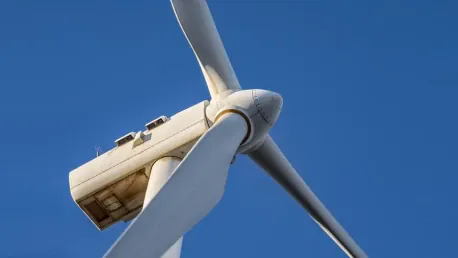The decommissioning of wind turbines marks a significant stage in the lifecycle of wind energy infrastructure. According to a recent report from the Department of Energy (DOE), approximately 90% of the mass of U.S. wind turbines can be effectively recycled, mainly consisting of steel and concrete. However, the remaining 10% presents notable recycling challenges, particularly elements like blades, generators, and nacelle covers. These components require innovative strategies to address the recycling difficulties they pose. The DOE’s findings underline the need for a circular economy within the wind energy sector, calling for a multifaceted approach to enhance the recyclability of these critical systems.
Promoting a Circular Economy in Wind Energy
Recycling of Turbine Towers, Foundations, and Steel-based Components
The DOE report underscores the significant potential of recycling wind turbine towers, foundations, and steel-based drivetrain subcomponents. These areas are currently the most feasible to recycle due to their composition and the presence of established recycling chains. Steel, being a primary component, can be readily repurposed, while concrete foundations can also be crushed and reused in various construction projects. The efficiency in recycling these materials greatly contributes to the overall sustainability and economic viability of decommissioned wind turbines. However, efforts must be enhanced to ensure that these materials are consistently recycled to their maximum potential.
Despite the successes in recycling certain turbine components, considerable hurdles remain with components like turbine blades. Turbine blades are primarily made of epoxy resins derived from nonrenewable petroleum resources, making them difficult to recycle. Their intricate design and robust construction, necessary to withstand harsh operating conditions, further complicate the recycling process. The DOE’s report highlights that overcoming these challenges will require a combination of improved decommissioning practices, advancements in recycling technologies, and strategic changes in material composition to facilitate easier recycling.
Challenges and Innovations in Blade Recycling
The recycling of wind turbine blades stands out as the most challenging aspect of achieving a circular economy for wind energy. The complex material composition of blades, which includes epoxy resins, fiberglass, and other materials, necessitates innovative solutions for effective recycling. One promising avenue explored by NREL researchers involves the development of wind turbine blades using plant-based resins. In 2023, these plant-based resins showed promising initial results, demonstrating potential as a sustainable and recyclable alternative to traditional epoxy resins. Transitioning to these environmentally friendly materials could significantly reduce the environmental footprint of decommissioned wind turbines.
Additionally, the DOE report outlines several advanced recycling technologies that may offer medium- and long-term solutions for blade recycling challenges. These include thermoplastic resins, pyrolysis, and chemical dissolution techniques. Thermoplastic resins are particularly appealing due to their ability to be remolded and reused, effectively closing the loop on material use. Pyrolysis and chemical dissolution, while still in the developmental stages, hold promise for breaking down complex materials into reusable components. The integration of these technologies could revolutionize the recycling process for wind turbine blades, setting new standards for sustainability in the wind energy sector.
Expanding Wind Energy Recycling Capacities
Recovering Critical Materials and Building Infrastructure
To maximize the recyclability of wind turbine components, it is crucial to recover critical materials and alloying elements from the decommissioned structures. The DOE report emphasizes the importance of developing a robust recycling infrastructure capable of efficiently processing these materials. This includes the recovery of valuable metals such as copper and aluminum, which are extensively used in turbine construction. An expanded recycling production capability is essential to meet the increasing volume of decommissioned turbines and the growing demand for these recycled materials in other industries. By 2040, the strength of wind energy systems could significantly impact the United States’ recycling capacity, driving technological and infrastructural advancements.
In addition to enhancing material recovery processes, the report also suggests that improvements in decommissioning procedures and recycling facilities are vital. Developing standardized methods for dismantling wind turbines can ensure that components are preserved in a condition suitable for recycling. Furthermore, investments in state-of-the-art recycling facilities equipped with advanced sorting and processing technologies will be necessary to handle the influx of materials. Strategic collaborations between industry stakeholders, government entities, and research institutions will be paramount in constructing a comprehensive recycling network capable of supporting the circular economy vision for wind energy.
Future Prospects and Strategic Improvements
The decommissioning of wind turbines represents a crucial phase in the lifecycle of wind energy infrastructure. A recent report from the Department of Energy (DOE) reveals that about 90% of the mass of U.S. wind turbines is recyclable, primarily consisting of steel and concrete. However, the remaining 10% poses significant recycling challenges, particularly components such as blades, generators, and nacelle covers. These parts require novel strategies to overcome the recycling obstacles they present. The DOE’s report emphasizes the necessity for a circular economy in the wind energy sector, advocating for a diverse approach to improve the recyclability of these essential systems. This highlights the importance of developing innovative recycling methods and sustainable practices to ensure that decommissioned wind turbines can be effectively and efficiently repurposed, minimizing environmental impact. As wind energy continues to grow, it is critical to address these recycling challenges to support the industry’s long-term sustainability and environmental benefits.









